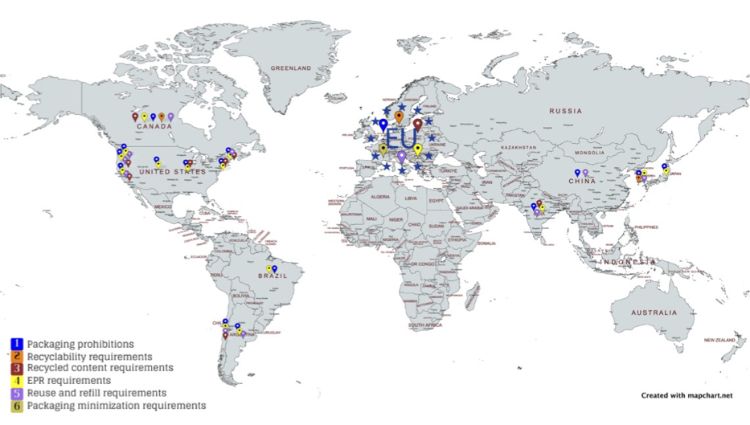
Carinna Saldaña-Pierard, Phuong Mai Nguyen, Frédéric Debeaufort, Olivier Vitrac, Rafael Auras
The evolving global landscape of packaging regulations, driven by heightened public concern over single-use packaging and plastic waste, signals a significant shift toward circular economy principles. These regulatory changes, including the United Nations Environmental Programme's endorsement of a legally binding international agreement on plastic waste management, are expected to have far-reaching impacts on product safety, packaging design, and global trade. The newly adopted and emerging policies prioritize waste reduction, reuse, recycling, and the integration of recycled materials. However, the rapid introduction of environmentally driven packaging regulations—especially those targeting sensitive sectors like food and cosmetics—presents potential risks for product/packaging safety and food waste, alongside challenges for trade harmonization across regions with divergent regulatory goals. This forum article reviews key regulatory frameworks from Asia, Europe, and the Americas, detailing material bans, reuse and refill targets, recycling mandates, and extended producer responsibility initiatives. It examines the potential impact of these regulations on global trade dynamics and their implications for universally accepted safety standards. Despite the well-meaning intent behind these laws, gaps in understanding the protective role of packaging and its broader environmental impact may lead to misconceptions in developing sustainable product-packaging systems. Current policies primarily target waste reduction, but an integrated approach is needed – one that considers how packaging extends food shelf life, lowers resource use, and reduces greenhouse gas emissions. Consumer education and transparent communication from regulators and industry will guide informed, sustainable choices, ultimately supporting a more transparent shift toward a circular economy.



 Print
Print Email
Email




